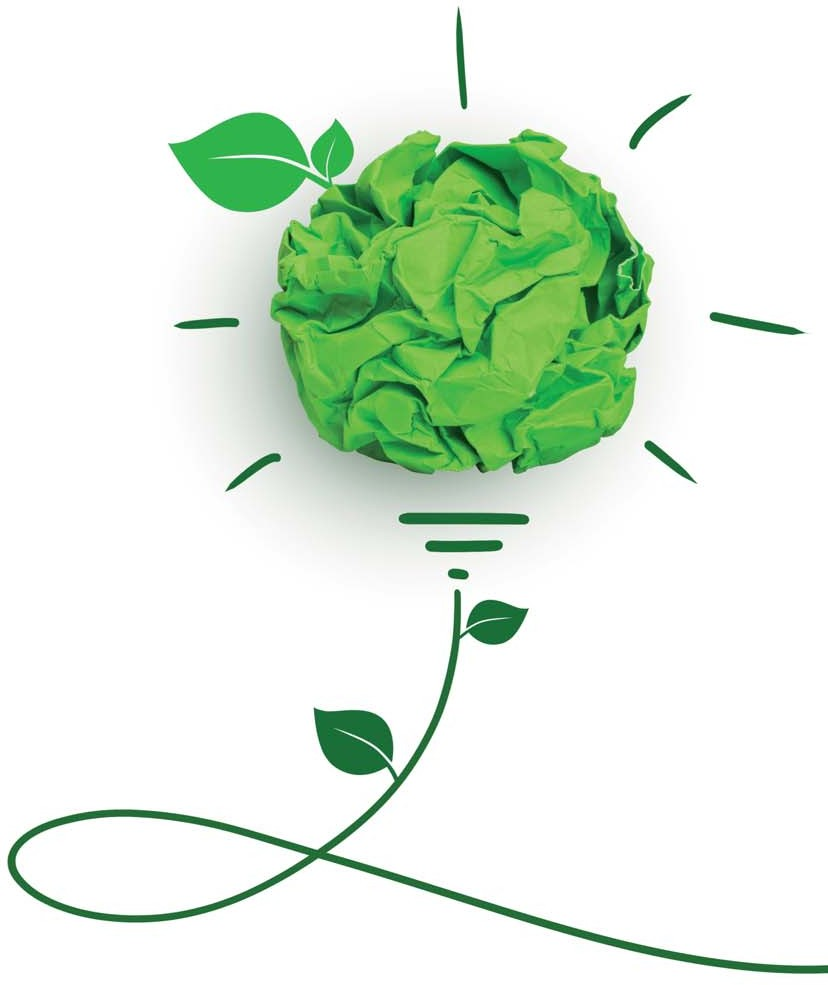Sustainability, in the broadest sense, applies to the ability of something to ‘sustain’ or maintain itself over time. Many steps are being undertaken to mitigate the negative impact of our methods and practices created on the ecosystem, over decades. But the question to contemplate is whether it is too late into the game? Many have claimed that there is no turning back; the damage is done. Are the attempts adapted to balance or retract such movement good enough? Or maybe everyone is scrambling but without any clear direction? At the same time, sentiments regarding the idea or reality of ‘sustainability’ still bring a ray of hope we can cling onto.

The definition of ‘sustainability’ that is most commonly referred to and is the simplest to fundamentally connect with comes from the 1987 Brundtland Commission Report for United Nations. It defines the concept as “meeting the needs of the present without compromising the ability of future generations to meet their own needs.” If this definition has been coined eons ago, why is there a tsunami of ‘green’ reawakening occurring at this particular juncture? And if it is happening now, is there a possibility of changing the wave in our favour? Looking into our past as well as the current atmosphere of effects of anthropogenic climate change on modern life – ranging from uncomfortable heat waves, floods, catastrophic drop in temperatures, wildfires and various other lethal weather events – it has gained a lot of attention. Clearly, nature has to be on our side and we must learn to respect the way we were meant to share and guard.

An overview of the global apparel market reveals projected growth in value from US$1.5 trillion in 2020 to US$2.25 trillion, clearly showing that the demand for clothing and shoes is on the perpetual rise in the world. Zoning down towards India as a fashion market reflects revenues in the apparel market amounting to US$88,486 million in 2022. The market is supposed to grow annually by 4.85% (CAGR 2022-2026). And the volume is expected to amount to 37,649 million pieces by 2026. The apparel market is expected to show growth of 8.8% in 2023.
These numbers provide clarity on the current fashion atmosphere from various perspectives and the criticality of finding solutions that can be integrated with our systems. Sustainability once again is making grounds in India; the long-lost art is being revived, or rather, being brought to the forefront because of the value system of Gen-Z and millennials. The local market is forecast to reach nearly US$60 billion in revenues in 2022, making it the sixth-largest in the world after the UK and Germany, according to a recent FashionScope report from McKinsey & Company, a US-based management consultancy.
ake their choice basis the brand’s commitmentto society, environment and product.
Textiles and Government Initiatives
The textile industry employs around 4.5 crore workers, including 35.22 lakh handloom workers, all over the country. Growth in demand is expected to continue at 12% CAGR reaching US$220 billion by 2025-26, with rising exports valued at US$50 billion. The government is also making investments under the scheme for integrated textile parks (MITRA) and the Technology Upgradation Fund Scheme to train the workforce and to encourage private investment in the Indian textile and apparel industry. Cloth production stood at 63.34 billion square metres in FY20 (till January 2020). The `10,683 crore (US$1.44 billion) Production-Linked Incentive (PLI) scheme is expected to be a major booster for textile manufacturers. The scheme proposes to incentivise MMF (man-made fibre) Apparel, MMF Fabrics and 10 segments of Technical Textiles products, making India the hotspot for national and international drivers seeking to enter the realm of textiles and apparel.
In March 2021, Minister of Textiles, Smriti Irani, announced that India will be fully self-reliant in silk production in the next two years. In October 2021 the government approved a scheme worth `4,445 crore (US$594.26 million) to establish seven integrated mega textile parks and boost textile manufacturing in the country. The Ministry of Textiles approved continuation of the comprehensive handicrafts cluster development scheme with a total outlay of Rs160 crore (US$21.39 million). Through this scheme, the government aims to support domestic SMEs and local artisans. Furthermore, SAMARTH training at 75 training centres across the country, to accelerate the scheme’s coverage among artisans, was introduced. To support the handloom weavers/weaver entrepreneurs, the Weaver MUDRA Scheme was launched to provide margin money assistance at 20% of the loan amount subject to a maximum of Rs10,000 (US$134.22) per weaver. The loan is provided at an interest rate of 6% with credit guarantee of three years.
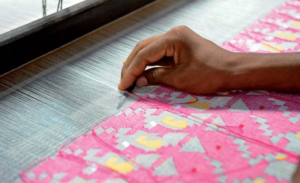
However, a considerable quantity of effluent is generated through textile processing, which creates critical environmental pressure. Handling textiles is an enormous chemical challenge. It employs abundant, ecologically sparse, non-biodegradable compounds. The textile industry utilises various colours, synthetic blends and helper synthetics in handling materials. According to evaluations of the World Bank, about 17 to 20 per cent of all present water pollution is solely induced by colouring and finishing patterns. Nearly 72 unique toxic synthetics are stated to be available in water only for colouring patterns.
Hence, along with Circular Design Challenge (CDC), Clothing Manufacturers Association of India (CMAI) along with the UN and RISE WORLDWIDE (Formally IMG RELIANCE) launched Project SU.RE, ‘Sustainable Resolution’, said to be the domestic apparel industry’s largest commitment towards sustainable fashion. Other supporters include Lenzing EcoVero, which produces viscose fibres made from renewable wood, and R Elan, which produces GreenGold fibres made from 100% used PET bottles with one of the lowest carbon footprints globally. The initiative introduced a framework to help the industry reduce its carbon emissions, increase resource efficiency, tackle waste and water management, thus creating positive social impact for long-term sustainability leading to greener trajectories by 2025. The aim is to help signatory brands achieve the five SU.RE goals. The project’s signatories comprise 16 of India’s top clothing brands, with a combined industry value of around Rs30,000 crore (over US$4 billion), including Future Group, Levi’s, Aditya Birla Fashion & Retail, Arvind Fashions, House of Anita Dongre, 109F and Shopper’s Stop. According to Deloitte, with more than 75% of textile workers globally being women, promoting SDGs (Sustainable Development Goals) is a priority for the sector. Gender diversity serves manufacturing business through advanced innovation, a more significant return on equity and improved profitability.
There is also the Circular Apparel Innovation Factory, a venture initiated by Intellecap with anchor partners Aditya Birla Fashion & Retail and The Doen Foundation. Its team of consultants, industry specialists and impact professionals looks at the textile value chain and identifies the gaps. It then tests innovative solutions and forges meaningful alliances to promote circularity – much needed in a sector that is economically fast- forward but also one of the most polluting.
Every company has to set their own benchmarks and expand as they grow into their green initiatives without getting a backlash from other organisations that have created a target based on another tangent.
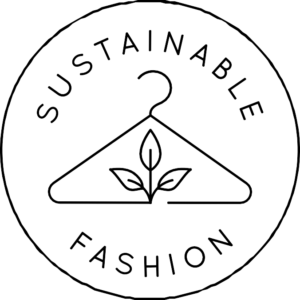 Sustainability and Sustainable Development
Sustainability and Sustainable Development
Sustainable development is one of the most difficult and arduous but critical undertakings that humanity has ever faced. Attaining sustainability requires addressing many fundamental issues at local, regional and global levels, and achieving the goals and objectives of sustainability presents a great challenge for all segments of society. A core principle of sustainable development is to improve human well-being and to sustain these improvements over time, but the consequences of climate change and the growing demand for energy and resources are making this objective more formidable. A report by McKinsey shared how brands can adopt sustainable means in a cost-effective manner. “The sustainability impact of clothing continues to mount after consumers leave the store with newly purchased apparel. Washing and drying 1 kilogram of clothing over its entire life cycle,
The same link was created between Tennis Australia and NC John & Sons, a garnet company in Tamil Nadu. The Tirupur – based company recycled 1,88,708 PET bottles to make 25,000 garments, including t-shirts, leggings, shorts and zipper jackets for ball kids and court-side statisticians at the Australian Open 2020 that was held from January 14 to February 20. The products are made from 100 per cent polyester filament yarn that was imported from Taiwan in white, green and aqua blue. It was knitted and dyed in Surat, after which a team of 100 tailors in Tirupur designed them according to the requirements of Tennis Australia. using typical methods, creates 11 kilograms of greenhouse gases, according to our estimates — an amount that companies could reduce by altering fabrics and clothing designs. The post-purchase choices that consumers make, such as whether to wash clothes in cold, warm or hot water, also make a big difference,” the report stated.
Popular fashion brand UNIREC has not only been manufacturing garments made from recycled PET bottles, but also looking at finding solutions for upcycling garments in different shapes and forms so as to make sure that the lifecycle of the fabric goes up, all the while reducing the impact on the environment. Kapil Bhatia, CEO and Founder, UNIREC, shared that the company has been building its business keeping sustainability in mind. “Sustainability would mean to us any means of manufacturing which reduces the burden on the environment, reuses the resources available or recycles the existing resources to new ones. UNIREC, a unit of BrandStore India Private Limited’s, has been launched with a focus towards sustainability by creating a brand where every product is produced using recycled plastic PET bottles and thereby reducing the carbon footprints,” he says.
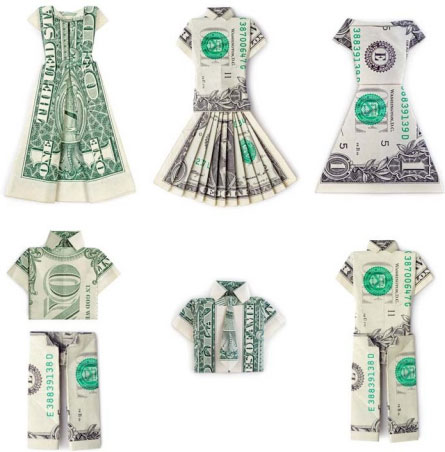 Furthermore, according to Rina Singh, founder of Ekà, “The term ‘sustainable fashion’ is an oxymoron because if you are going to create something fashionable, it cannot be sustainable.” She follows her idea of sustainability by sustaining a craft. She has been working with the same cluster of craftsmen for a decade. “And I have to keep a craft relevant through the designs that I make,” she says. Singh explains that if a certain craft, whether it is of weaving or dyeing or embroidery, takes a month and a half to complete, then it will have to be respected. Craftsmen who are employed in the process will need to be paid for the entire duration of the process. “By trying
Furthermore, according to Rina Singh, founder of Ekà, “The term ‘sustainable fashion’ is an oxymoron because if you are going to create something fashionable, it cannot be sustainable.” She follows her idea of sustainability by sustaining a craft. She has been working with the same cluster of craftsmen for a decade. “And I have to keep a craft relevant through the designs that I make,” she says. Singh explains that if a certain craft, whether it is of weaving or dyeing or embroidery, takes a month and a half to complete, then it will have to be respected. Craftsmen who are employed in the process will need to be paid for the entire duration of the process. “By trying
to speed up the process, you will actually be killing it,” she says. Hence, the concept of sustainable clothing, as opposed to sustainable fashion, is one that not only addresses the issues of sourcing responsibly and adopting production techniques that are sustainable for all stakeholders, but it also stands for raising awareness among consumers about buying less and thoughtfully. What the adoption of these practices therefore does is push up prices, thus nudging sustainable clothing into the realm of luxury.
 Leaning strongly towards the world of Indian luxury segment are veteran Indian designers such as Rohit Bal, Ritu Kumar and Rajesh Pratap Singh to revive forgotten local weaves, empowering artisan communities and using earth-friendly fabrics. Delhi-based designer Gautam Gupta is working with natural hand-spun fabrics crafted from banana, bamboo, coffee beans and natural silks. Designer Aneeth Arora’s new labels – Pero Recycle and Pero Upcycle – focus on environmental conservation. Anita Dongre, a vegan and animal lover who received a humanitarian award in 2011 from the US non-governmental organisation People for the Ethical Treatment of Animals, says HOAD limits the amount of fabric waste during manufacturing and recycles discarded textiles into handcrafted products through tie-ups with non-profit organisations and female self-help groups. The company’s 11,000-square metre headquarters, nestled in the hills of Navi Mumbai, near Mumbai, uses natural lighting, energy saving, water conservation and biodegradable packaging in line with guidelines developed by the Sustainable Apparel Coalition, a global clothing industry organisation that campaigns for sustainable production. Furthermore, Chanakya School of Craft has build a platform of multi-dimensional learning, focused on the arts and crafts while providing equal opportunity to an often ignored backbone of our community : Women. Consciously conserving traditional crafts while reinterpreting in contemporary ways to acknowledge, respect and protect the social and environmental sustainability of our traditional cultural expressions.
Leaning strongly towards the world of Indian luxury segment are veteran Indian designers such as Rohit Bal, Ritu Kumar and Rajesh Pratap Singh to revive forgotten local weaves, empowering artisan communities and using earth-friendly fabrics. Delhi-based designer Gautam Gupta is working with natural hand-spun fabrics crafted from banana, bamboo, coffee beans and natural silks. Designer Aneeth Arora’s new labels – Pero Recycle and Pero Upcycle – focus on environmental conservation. Anita Dongre, a vegan and animal lover who received a humanitarian award in 2011 from the US non-governmental organisation People for the Ethical Treatment of Animals, says HOAD limits the amount of fabric waste during manufacturing and recycles discarded textiles into handcrafted products through tie-ups with non-profit organisations and female self-help groups. The company’s 11,000-square metre headquarters, nestled in the hills of Navi Mumbai, near Mumbai, uses natural lighting, energy saving, water conservation and biodegradable packaging in line with guidelines developed by the Sustainable Apparel Coalition, a global clothing industry organisation that campaigns for sustainable production. Furthermore, Chanakya School of Craft has build a platform of multi-dimensional learning, focused on the arts and crafts while providing equal opportunity to an often ignored backbone of our community : Women. Consciously conserving traditional crafts while reinterpreting in contemporary ways to acknowledge, respect and protect the social and environmental sustainability of our traditional cultural expressions.
These efforts have been reflected continuously in global collaborations with the couture house of Dior. Their craftsmanship was acknowledged by Dior on their instagram page, reflecting a move towards transparency and providing due respect that our karigars deserve.
Hence, a few undertakings that companies are tapping into are transparency and traceability. The ‘Woke-Washing’ syndrome is rampant. The different ways it can be addressed are clearer communication, control in the hands of the consumers so they can become advocates of the brand and their values, and truly working with various other organisations that are effectively looking at or creating viable and easy-to-incorporate solutions. Collaborative and co-creative efforts should be integrated in a simplified manner. That will provide them confidence to forge ahead. Some cues can be adapted from the world of slow fashion, a concept not at all alien in the Indian context but seems to have been forgotten in translation. Furthermore, adapting technology within the structure such as Blockchain, tags, digital passports, 3D avatars, etc., will act as a helping hand. We have the base that adaptation needs to be pushed forth with. For example, Prada had invited Bengaluru-based company.
A study conducted by Mahindra Group published in 2020 revealed that 85 per cent of customers expressed interest in sustainability and 70 per cent claimed to be educated about environmental issues.
Complex Relationship between Consumers and Brands
Conscious consumerism is gaining roots on Indian soil, more so with Gen-Z and millennials who are willing to make their choice basis the brand’s commitment to society, environment and product. A study conducted by Mahindra Group published in 2020 revealed that 85 per cent of customers expressed interest in sustainability and 70 per cent claimed to be educated about environmental issues. Internet searches for ‘sustainable fashion’ tripled between 2016 and 2019. Furthermore, The IBM Institute for Business Value surveyed over 14,000 adults globally from nine countries — United States, India, United Kingdom, Canada, Germany, Mexico, Spain, Brazil and China — during March 2021 to better understand consumers’ views on environmental sustainability, especially in the aftermath of the pandemic. In fact, 78 per cent of consumers in India are most willing to change their purchasing behaviour to reduce a negative impact on the environment. The percentage of respondents is the highest across all countries surveyed. At 70 per cent, Indian consumers have the highest level of association of climate risk with financial risk.
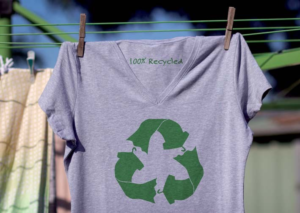 But such good intentions were not truly reflected in actions. According to a recent report by The Business of Fashion and McKinsey & Co., 65 per cent of consumers in developing economies are actively seeking BigThinx to be a part of their fashion-tech accelerator programme – a clear projection that we have the talent within our own front-yard. Brands/companies have to play a pivotal role in this regard. The communication strategies adapted should lead to a positive fashion future by integrating in the core from the get-go. Exhibit 2 determines a manageable approach. If not from the beginning, there is always a moment to review where the brand sees itself in the near future, fine-tuning their offerings not only in terms of product but storytelling, removing the dominant narrative of exploitation, extraction and disposable behaviour and promoting regeneration, equity and care. This would thus create a base for the involved players of all size and market to show and develop their innovations whenever found suitable, being integrated within their structures.
But such good intentions were not truly reflected in actions. According to a recent report by The Business of Fashion and McKinsey & Co., 65 per cent of consumers in developing economies are actively seeking BigThinx to be a part of their fashion-tech accelerator programme – a clear projection that we have the talent within our own front-yard. Brands/companies have to play a pivotal role in this regard. The communication strategies adapted should lead to a positive fashion future by integrating in the core from the get-go. Exhibit 2 determines a manageable approach. If not from the beginning, there is always a moment to review where the brand sees itself in the near future, fine-tuning their offerings not only in terms of product but storytelling, removing the dominant narrative of exploitation, extraction and disposable behaviour and promoting regeneration, equity and care. This would thus create a base for the involved players of all size and market to show and develop their innovations whenever found suitable, being integrated within their structures.
Continuation and Circularity
Circularity in the form of innovation, recycling, upcycling, rental and resale has found roots within our own backyard. The ‘woke’ generation is doing its best to bring it back to the forefront. Are they truly circular or not in actuality is a topic for another day, but efforts undertaken reflect a need that is building and gaining strength. Are these the most viable solutions? Maybe, maybe not, but nonetheless, a stepping stone that requires tweaking as we move along. Furthermore, the power the consumers hold should not be underestimated. They demand answers and are not shy in effectively using the media to voice their concerns.
They systematically refuse to be ‘woke-washed’ into what does not stand true to their values. If a brand wants to grow and be relevant to their audience, absolute commitment to the audience and their values has to be adhered to.
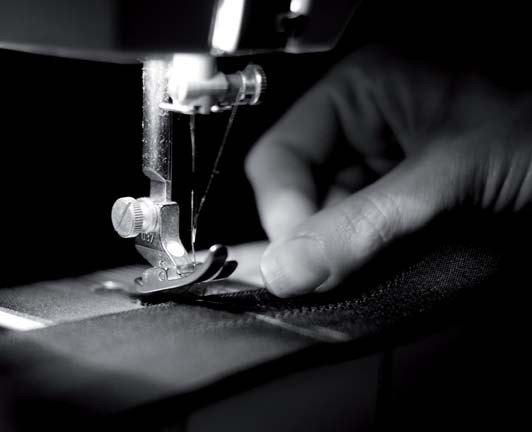 From a company’s point of view, they should have the freedom to decide what ‘sustainability’ metrics they want to follow through. Such decisions should be respected by all. Every company has to set their own benchmarks and expand as they grow into their green initiatives without getting a backlash from other organisations that have created a target based on another tangent. For example, a climate-dedicated organisation shouldn’t harass a company with technology targets without having a truly in-depth understanding of their end goal or vice versa. Rather, a fair space should be provided for everyone to reinvent what define their brand or value proposition and innovate. At times, letting go of the terminology of ‘sustainability’, which has been used, overused and abused, works for some. Patagonia is one such example. They have decided to let go of the word ‘sustainability’ from their website but are still becoming stronger in their efforts. If that is the decision, then it should be respected by all. What is more important – the effort or the tag?
From a company’s point of view, they should have the freedom to decide what ‘sustainability’ metrics they want to follow through. Such decisions should be respected by all. Every company has to set their own benchmarks and expand as they grow into their green initiatives without getting a backlash from other organisations that have created a target based on another tangent. For example, a climate-dedicated organisation shouldn’t harass a company with technology targets without having a truly in-depth understanding of their end goal or vice versa. Rather, a fair space should be provided for everyone to reinvent what define their brand or value proposition and innovate. At times, letting go of the terminology of ‘sustainability’, which has been used, overused and abused, works for some. Patagonia is one such example. They have decided to let go of the word ‘sustainability’ from their website but are still becoming stronger in their efforts. If that is the decision, then it should be respected by all. What is more important – the effort or the tag?
A quote by Li Edelkoort, one of the world’s most respected trend forecasters, sums it well: “Fashion is old fashioned.” Yet she believes “it’s a truth that can be changed.”



